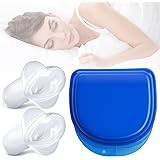Mastering Cold Weather Camping: Essential Gear & Expert Tips to Stay Warm and Dry
Ever wondered how to truly conquer the chill of fall and winter camping, transforming potentially miserable nights into cherished memories? As the insightful video above highlights, venturing into the backcountry during colder months offers unique rewards—think fewer bugs, serene landscapes, and unparalleled tranquility. But these incredible experiences demand careful preparation, especially when it comes to staying warm and dry. Let’s delve deeper into the essential gear and strategic practices that make **cold weather camping** not just tolerable, but truly enjoyable.The core principle of successful cold weather camping is deceptively simple: **stay dry to stay warm.** Your body is a remarkable internal furnace, constantly generating heat to maintain a stable core temperature. However, moisture acts like a dampening blanket on that fire, rapidly drawing heat away through conduction and evaporation. This crucial concept underpins every gear choice and every strategic tip we’ll explore, emphasizing the importance of managing both external precipitation and internal perspiration.
Your Shelter System: A Fortress Against the Elements
1. Choosing the Right Tent for Winter Camping Adventures
When the temperature drops, your tent transforms from a simple shelter into a vital survival tool. While a three-season tent might suffice for mild fall nights, true **winter camping** often calls for a more robust four-season model. These tents feature stronger poles, more durable fabrics, and less mesh, specifically designed to withstand heavy snow loads and fierce winds.
The video’s mention of the Nemo Aurora two-person tent with its dome shape perfectly illustrates a key advantage: livable space. Unlike restrictive A-frame designs, a dome tent allows you to sit up comfortably, move around, and organize your gear without feeling cramped. This extra space, even if you’re camping solo, significantly boosts morale and practicality, making the slight increase in weight well worth the comfort.
2. The Indispensable Sleeping System: Bag & Mat Synergies
Your sleeping system is arguably the most critical component for a warm night in the cold. It’s a two-part harmony, with both your sleeping bag and sleeping mat playing equally important roles.
Sleeping Bags: The Loft of Life
A down sleeping bag, like the speaker’s preference, offers an exceptional warmth-to-weight ratio, making it a favorite for backcountry enthusiasts. The magic of down lies in its “loft”—the ability of the duck feathers to fully expand and trap insulating air between them. This air is what keeps you warm, acting as a thermal barrier against the cold. However, down’s Achilles’ heel is moisture; when wet, it compresses, losing its loft and transforming into a cold, clammy sheet, as the speaker vividly recounted from personal experience.
This is why keeping your down sleeping bag in a dry bag is non-negotiable. Think of a dry bag as a waterproof vault for your most vital piece of insulation. Without it, a sudden downpour or an unexpected slip into a stream could render your bag completely useless, turning a chilly night into a dangerous ordeal. Always match your sleeping bag’s temperature rating to the lowest expected temperatures, adding a buffer for safety.
Sleeping Mats: Your Insulating Buffer
A high-quality sleeping bag without a good sleeping mat is, as the video aptly puts it, “basically just a way to stay cold.” The ground is a notorious heat thief, constantly trying to draw warmth from your body through conduction. Your sleeping mat provides the crucial insulating layer between you and the cold earth.
The key metric here is the **R-value**, which quantifies a mat’s thermal resistance. The higher the R-value, the better the insulation. For general **cold weather camping**, aim for an R-value of at least 4. For truly frigid winter conditions, closer to 6 or 7, like the Exped Dura 5R mentioned in the video, is ideal. Layering an inflatable pad with a closed-cell foam pad, as the speaker does, offers dual benefits: increased R-value and a crucial backup in case the inflatable pad punctures overnight, ensuring you’re never sleeping directly on frozen ground.
Strategic Layering: Your Personal Thermostat
3. The Art of Layering for Optimal Warmth and Comfort
Effective layering is like having a personal thermostat, allowing you to regulate your body temperature precisely as conditions change and your activity level fluctuates. This multi-layered approach is designed to keep you warm without overheating and sweating, which, as we know, is the enemy of warmth in cold environments.
The Three-Layer System:
- **Base Layer (Wicking):** This layer sits directly against your skin. Its primary job is to wick sweat away, keeping you dry. Materials like merino wool (the speaker’s preferred quarter-zip) or synthetic fabrics excel here. Avoid cotton at all costs; it absorbs moisture and stays wet, chilling you to the bone.
- **Mid-Layer (Insulation):** This is your warmth provider, designed to trap body heat. Fleece jackets (like the Patagonia Better Sweater), lightweight down sweaters, or synthetic puffy jackets serve this purpose. The video highlights the versatility of a good fleece, especially hooded versions, for added warmth around camp.
- **Outer Layer (Protection):** Your shell layer defends against wind, rain, and snow. A waterproof and windproof rain jacket, such as the Patagonia Torrentshell 3L, is indispensable. The term “pit out” refers to when the fabric’s waterproofing eventually fails, allowing moisture to penetrate. A quality rain jacket will resist this for a longer time, keeping you dry during strenuous activity or prolonged exposure. Complement this with rain pants for full-body protection, particularly when trudging through snow.
4. Protecting Extremities: Hats, Gloves, and Dry Socks
Your head and hands are key areas for heat loss, making their protection paramount. A significant amount of body heat can escape through an uncovered head, so a warm hat is essential. Look for hats with wind-stopping features, like the felt layer around the ears the speaker prefers, to prevent cold drafts from compromising your comfort.
For your hands, a system of merino wool glove liners (for dexterity while hiking) paired with a thicker, insulated outer glove for static activities around camp offers maximum flexibility and warmth. Always carry an extra pair of wool or synthetic socks to swap into for sleeping; having dry socks is a small luxury that makes a huge difference in comfort and preventing frostbite. The golden rule for cold weather is absolute: always have an extra change of clothes, kept absolutely dry and safe in a dry bag, specifically for sleeping or emergencies. And crucially, as the video advises, do not put on your dry clothes until you are safely inside your tent and ready for bed, protecting them from any unforeseen moisture at camp.
Hydration and Nutrition: Fueling Your Inner Fire
5. Water Purification in Freezing Temperatures
Staying hydrated is just as important in cold weather as it is in summer, even if you don’t feel as thirsty. Dehydration can quickly lead to hypothermia and impaired judgment. Always purify your water to prevent waterborne illnesses like giardia, which can quickly derail a trip. The Sawyer Squeeze filter is a popular choice due to its lightweight and efficiency, but as the speaker notes, all filter systems are vulnerable to freezing. When water inside the filter freezes, it expands and can damage the filter’s membrane or O-rings, rendering it useless or unsafe. The ingenious tip to keep your filter in a chest pocket or sleeping bag is vital for preventing this critical failure.
Alternative purification methods also have their place. Boiling water is the most foolproof method, killing all pathogens, but it consumes precious fuel. Chemical treatments, such as iodine or chlorine tablets, are lightweight and reliable backups, though they require wait times and can affect taste. A LifeStraw can be handy for quickly drinking from standing water in an emergency, but it’s less versatile than a full filter system or tablets for bulk water purification.
6. Beyond Water: Staying Fueled and Warm
Your body works harder to maintain warmth in cold conditions, meaning you’ll need more calories than usual. Pack high-energy, nutrient-dense foods rich in fats and complex carbohydrates. Think nuts, dried fruit, chocolate, and instant oatmeal. Warm meals and hot drinks like cocoa, tea, or instant soup are not just comforting; they provide an immediate internal warmth boost, helping you fend off the chill.
Essential Safety & Emergency Preparedness
7. Redundancy in Fire Starting & Navigation
Preparation for the unexpected is a hallmark of an experienced cold weather camper. Fire is not just for cooking; it’s a vital tool for warmth, morale, and signaling in an emergency. Always carry at least two independent ways to start a fire—perhaps a ferro rod and waterproof matches, or a lighter and fire starter tabs—and store them in separate parts of your pack or on your person. This redundancy ensures you’re never without this critical capability.
For navigation, while GPS apps are convenient, they are susceptible to battery drain in the cold and signal loss. Always carry a physical topographical map of the area and a reliable compass. Learn how to use them together, as they are foolproof and don’t rely on batteries. The speaker’s mention of a signal mirror also highlights a simple yet effective tool for attracting attention from air crews in a true emergency situation.
8. Personal Warmth & Emergency Shelter
Small items can make a huge difference in an emergency. Chemical body warmers are excellent for targeted warmth, but remember to place them on a layer of clothing, not directly on your skin, to prevent burns. An emergency bivy, which wraps around your body like a sleeping bag, offers far more protection and heat retention than a basic emergency blanket, providing a crucial layer of shelter in a pinch.
9. The Boot Dilemma: Avoiding Frozen Feet
The speaker’s vivid (and humorous) tale of frozen boots and a desperate, ill-advised attempt to warm them illustrates a common cold weather camping nightmare. Preventing your boots from freezing overnight is crucial for a comfortable and safe start to your day. The simple solution? Place your boots inside a trash bag and then tuck them into the bottom of your sleeping bag. Your body heat will prevent them from freezing solid, saving you from a potentially miserable experience or, worse, a difficult and unsafe hike out. This clever trick ensures your feet stay happy and functional, a non-negotiable for navigating icy, snowy terrain.
By prioritizing staying dry, equipping yourself with the right insulating layers, and practicing vigilant safety measures, you can transform the challenges of **cold weather camping** into exhilarating and unforgettable adventures. The crisp air, quiet forests, and pristine snow-covered landscapes await those prepared to embrace the chill responsibly.








